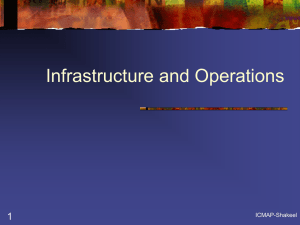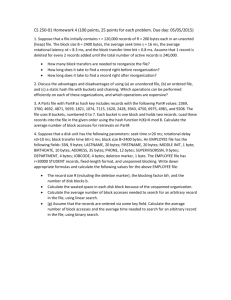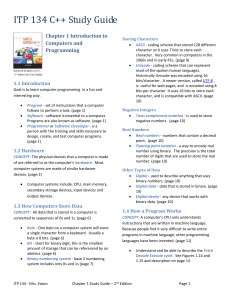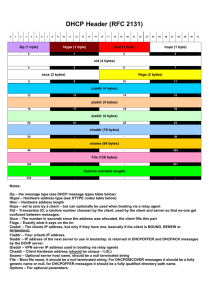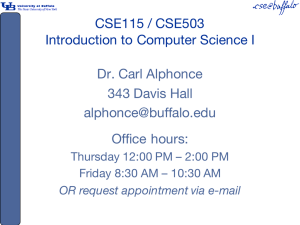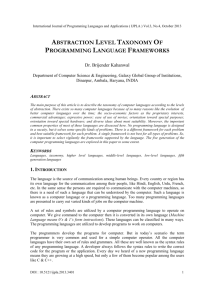MARMARA UNIVERSITY - FACULTY OF ENGINEERING
advertisement
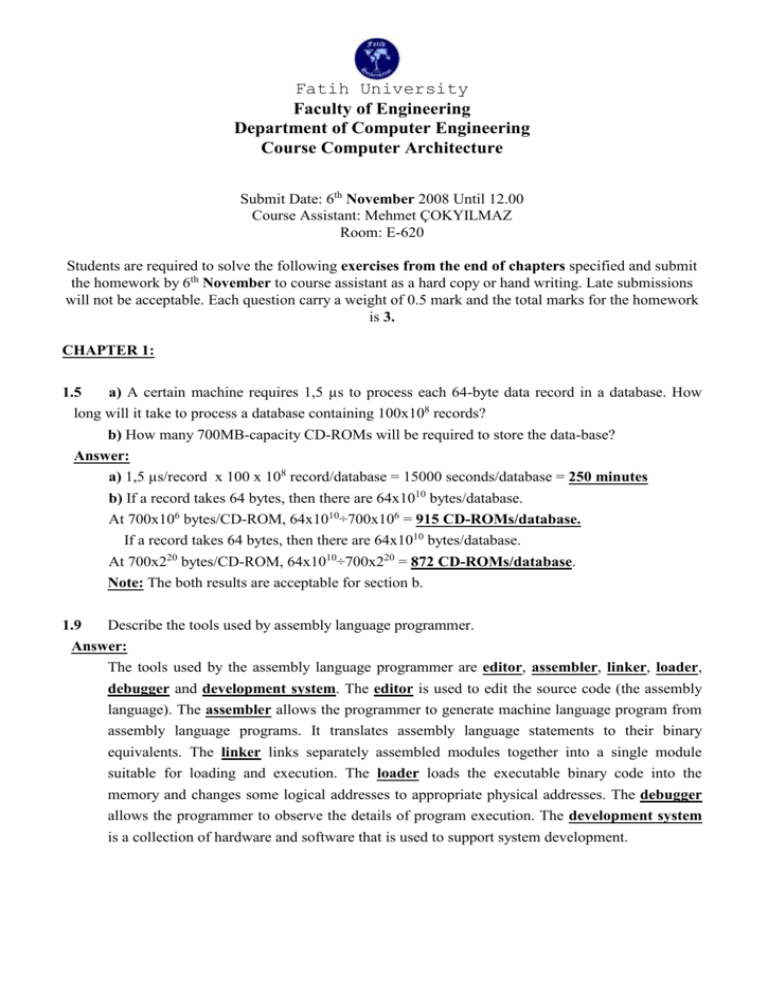
Fatih University Faculty of Engineering Department of Computer Engineering Course Computer Architecture Submit Date: 6th November 2008 Until 12.00 Course Assistant: Mehmet ÇOKYILMAZ Room: E-620 Students are required to solve the following exercises from the end of chapters specified and submit the homework by 6th November to course assistant as a hard copy or hand writing. Late submissions will not be acceptable. Each question carry a weight of 0.5 mark and the total marks for the homework is 3. CHAPTER 1: 1.5 a) A certain machine requires 1,5 µs to process each 64-byte data record in a database. How long will it take to process a database containing 100x108 records? b) How many 700MB-capacity CD-ROMs will be required to store the data-base? Answer: a) 1,5 µs/record x 100 x 108 record/database = 15000 seconds/database = 250 minutes b) If a record takes 64 bytes, then there are 64x1010 bytes/database. At 700x106 bytes/CD-ROM, 64x1010÷700x106 = 915 CD-ROMs/database. If a record takes 64 bytes, then there are 64x1010 bytes/database. At 700x220 bytes/CD-ROM, 64x1010÷700x220 = 872 CD-ROMs/database. Note: The both results are acceptable for section b. 1.9 Describe the tools used by assembly language programmer. Answer: The tools used by the assembly language programmer are editor, assembler, linker, loader, debugger and development system. The editor is used to edit the source code (the assembly language). The assembler allows the programmer to generate machine language program from assembly language programs. It translates assembly language statements to their binary equivalents. The linker links separately assembled modules together into a single module suitable for loading and execution. The loader loads the executable binary code into the memory and changes some logical addresses to appropriate physical addresses. The debugger allows the programmer to observe the details of program execution. The development system is a collection of hardware and software that is used to support system development. 1.10 Describe the difference between assembly language and high-level languages as regards type checking. What is the source of these differences? Answer: High-level languages usually have several primitive data types that are part of the language definition. In addition, most high-level languages provide some constructs to let the user define complex data types by composition of primitive types of the language. Correct type usage is usually enforced by the compiler during syntactic and semantic check phases. The rich data type structure built into higher level programming languages is missing from most assembly and machine languages. It is all “bits-n-bytes” at the machine level. Assembly language programmers need to specify the addresses where the program and data should be located and to focus on the machine level implementation. High-level language programmers want to compile to check the use of language constructs and to check some semantics of programs. High-level language programmers also need short representations of objects that are of interest to them, such as integers, real and characters. CHAPTER 2: 2.1 Refer to the four items on page 35 that an instruction must specify. What would need to be specified by the MC68000 instruction ADDI.W #9, D4 described in Table 1.2? Answer: Opcode: add immediate (16-bit word) Operands: the immediate value 9 and the value in data register D4 Result: in data register D4 Next instruction: implicitly in the word following this instruction 2.10 Suppose the instruction word in a general register machine has space for an opcode and either three register numbers or one register number and an address. What different instruction formats might be used for an ADD instruction, and how would they work? Answer: Format 1: ADD Rdst, Rsrc1, Rsrc2 Fetch the contents of register Rsrc1 and Rsrc2; add them, and then store the result into register Rdst. Format 2: ADD Reg, Mem-addr Fetch the contents from register Reg and memory address Mem-addr; add them, and then store the result into register Reg. 2 2.14 Suppose that SRC instruction formats are considered different only when field boundaries in the instruction word change and not when some fields or parts of fields are unused. How many different formats should appear in Figure 2.10 case? Answer: Format 1: Formats 3,4,5,6 and 7 in Figure 2.10 could be considered as one format. Format 2: Format 1 in Figure 2.10 uses a 17-bit constant, so it is another format. Format 3: Format 2 in Figure 2.10 is also distinct because it uses a 22-bit constant. Format 8 in Figure 2.10 can be combined with any format that has operand field. 3



